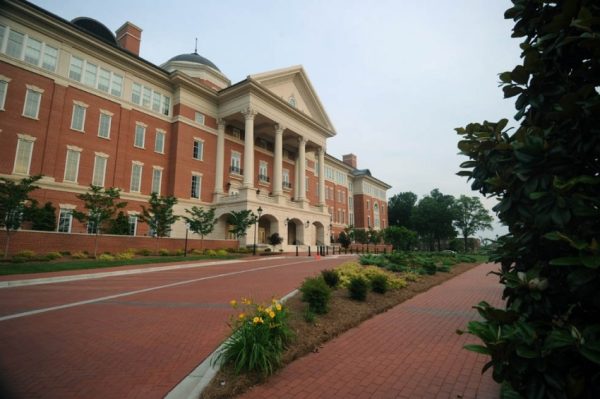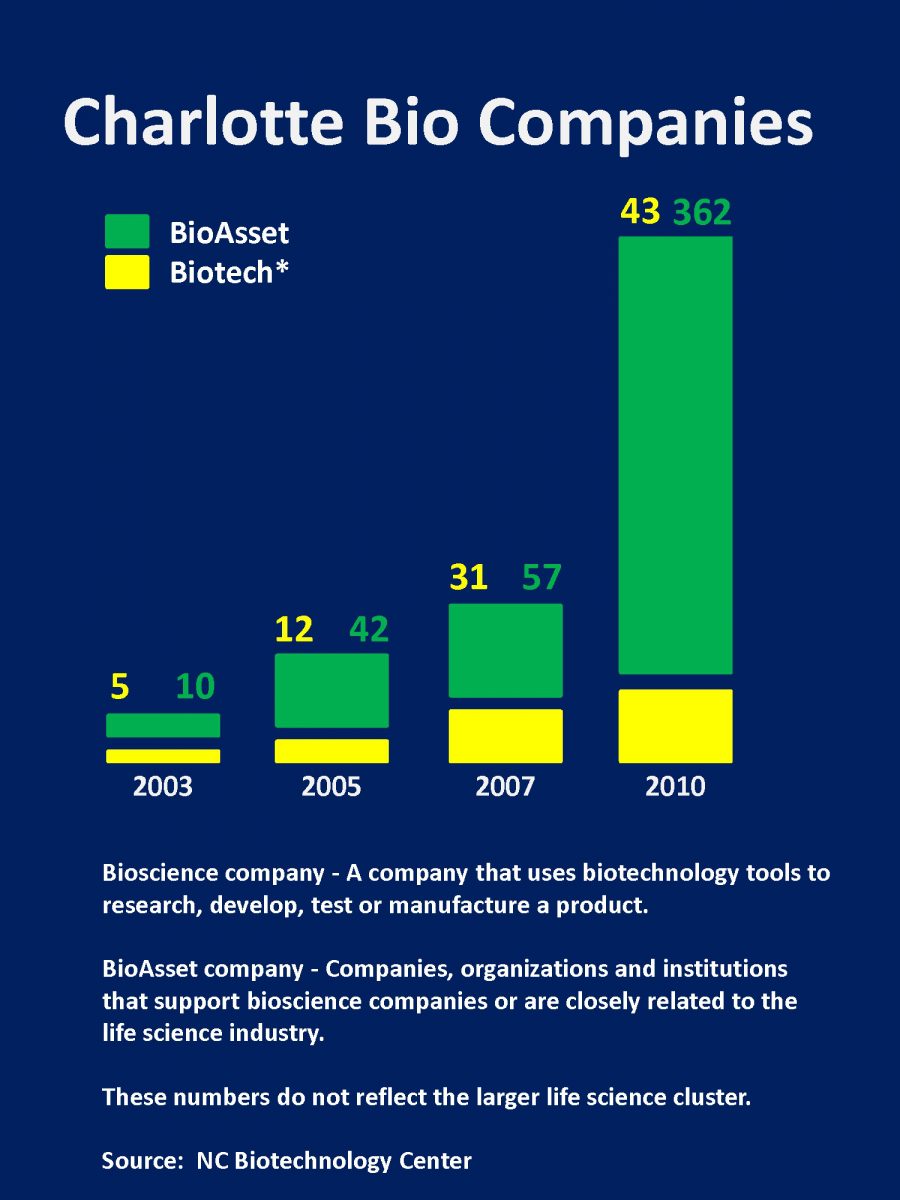Charlotte Biotech: A Life Sciences Cluster Emerges

A few weeks ago, UNC Charlotte hosted the ninth annual Charlotte Biotechnology Conference. The original idea for this event was that it serve as a barometer of the “life science cluster” in the Charlotte region. Sensing increased activity in patents and start-ups ten years ago, UNC Charlotte’s Office of Technology Transfer and the regional Small Business Technology Development Center partnered to host the first biotechnology conference – then called Charlotte’s Emerging Role in Biotechnology. The conference featured academic, industry and policy leaders and six sponsors. The planning committee for that inaugural event predicted 50 participants but missed the mark – 150 attended! For nearly a decade, attendance at the Charlotte Biotechnology Conference has been constrained not by interest but by the local fire code.
Looking back, the decision to establish such a conference seems truly visionary. This is especially true considering that in 2000, several pillars of today’s biotechnology sector in the Charlotte region did not exist, including the following.
- The BioEd Center, providing biotechnology workforce training throughout North Carolina
- UNC Charlotte’s Center for BioMedical Engineering Systems
- UNC Charlotte’s Department for Bioinformatics and Genomics
- Johnson C. Smith University’sprograms in bioinformatics
- The Greater Charlotte Office of the North Carolina Biotechnology Center
- The North Carolina Research Campus in Kannapolis
Yet, several important foundations were in place at the time.
- PhD programs in Biology and Precision Metrology at UNC Charlotte
- The Cannon Research Center at Carolinas Medical Center
- The largest cluster of biomedical device companies in the state
- Medical residents from various North Carolina and Virginia medical schools working at the region’s hospitals
 Over the past decade, I have watched the Charlotte Life Science cluster emerge rapidly. I’m frequently asked for the key to our region’s success, and in responding, I sometimes feel a bit like Jan Baptiste van Helmont, who in the early seventeenth century published a “recipe for the generation of mice” to support the now debunked theory that life originates from the inanimate – or what was referred to at the time as “spontaneous generation”. The mice recipe combined sweaty clothes and wheat in an open container stored in the dark for 21 days, and as one would expect, those ingredients often did result in the appearance of mice. (While teaching microbiology, I recently demonstrated the experiment 21 days before Halloween – planning to surprise my students with gummy rats for their completion of midterms on All-Hallows Eve. Fortunately or unfortunately – for the housekeepers and my evaluation – the experiment worked and we had a wonderful nest of baby field mice!)
Over the past decade, I have watched the Charlotte Life Science cluster emerge rapidly. I’m frequently asked for the key to our region’s success, and in responding, I sometimes feel a bit like Jan Baptiste van Helmont, who in the early seventeenth century published a “recipe for the generation of mice” to support the now debunked theory that life originates from the inanimate – or what was referred to at the time as “spontaneous generation”. The mice recipe combined sweaty clothes and wheat in an open container stored in the dark for 21 days, and as one would expect, those ingredients often did result in the appearance of mice. (While teaching microbiology, I recently demonstrated the experiment 21 days before Halloween – planning to surprise my students with gummy rats for their completion of midterms on All-Hallows Eve. Fortunately or unfortunately – for the housekeepers and my evaluation – the experiment worked and we had a wonderful nest of baby field mice!)
The mice recipe provides a metaphor for the rapidly growing life science cluster in the Charlotte region. The container represents general economic drivers, including the fact that Charlotte is ranked one of the best places to do business in the United States and hosts one of the nation’s most educated populations. As the recipe calls for an open container – Charlotte is indeed open to newcomers and new ideas. Our highly-regarded international airport facilitates the connectivity necessary to thrive in the global biotech economy. There are also specific drivers – what I would call the “bait” that attracts the mice – including: a proven labor pool ready to absorb a large bio-manufacturing project; research clusters in biomedical engineering, health, agriculture, nutrition and bioinformatics & genomics; and large agricultural, healthcare and medical device sectors.
The spark to our rapidly growing biotechnology sector has been vision. It was vision that founded the Cannon Research Center, the NC Biotechnology Center’s regional office and the Charlotte Biotechnology Conference. Our region is now benefitting from the UNC Charlotte College of Computing and Informatics’ vision of leveraging its expertise in business informatics to support the life science cluster by building a premier bioinformatics & genomics department. And it was vision that led David H. Murdock to partner with the State of North Carolina to transform millions of idle square feet at the site of a former textile plant in Kannapolis into a major research campus, housing eight universities, teaming with hundreds of research scientists and attracting millions in research funding in just five years.
It is this collection of visionaries, assets, collaboration and can-do spirit that positions the Charlotte region to be a major player in realizing what investor Steven Burrill has said about biotech’s great potential: “Biotechnology is the one industry that is poised to grapple with every major human and environmental challenge from global hunger to global warming…”
Marjorie Benbow is an attorney at Moretz & Skufca and focuses on technology transfer, licensing, corporate matters and general practice. Previously she managed the intellectual property at UNC Charlotte and later was science and technology officer for N.C.’s fourth largest hospital system and the executive director for the North Carolina Biotechnology Center in the region. Reach her at mtb@moretzandskufca.com.
Views expressed in this commentary are entirely those of the author(s) and do not necessarily represent the views of the UNC Charlotte Urban Institute, its staff, or the University of North Carolina at Charlotte.
Photograph by Nancy Pierce
Marjorie Benbow